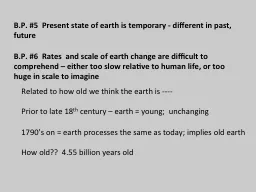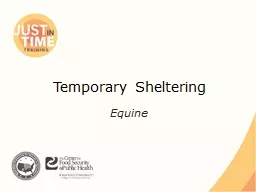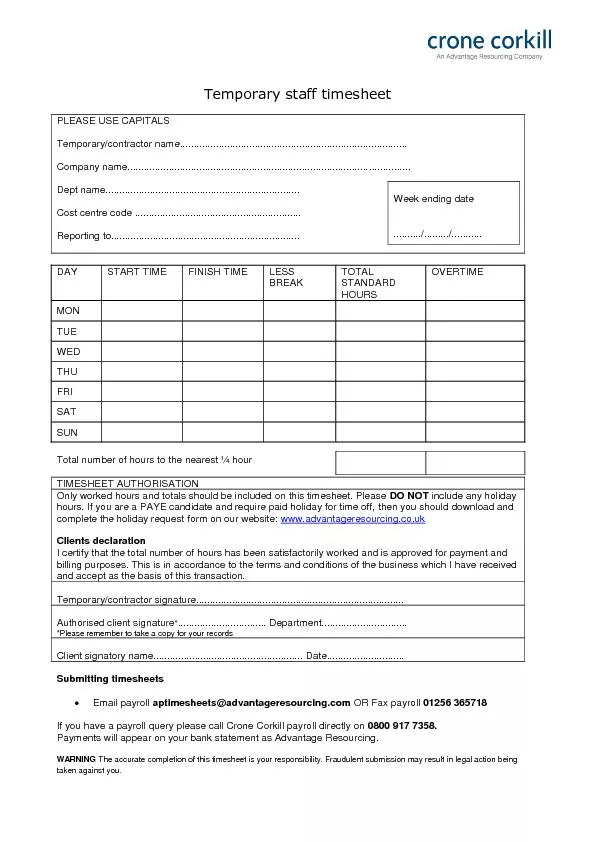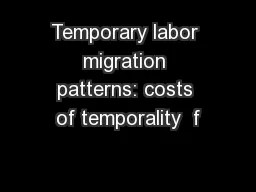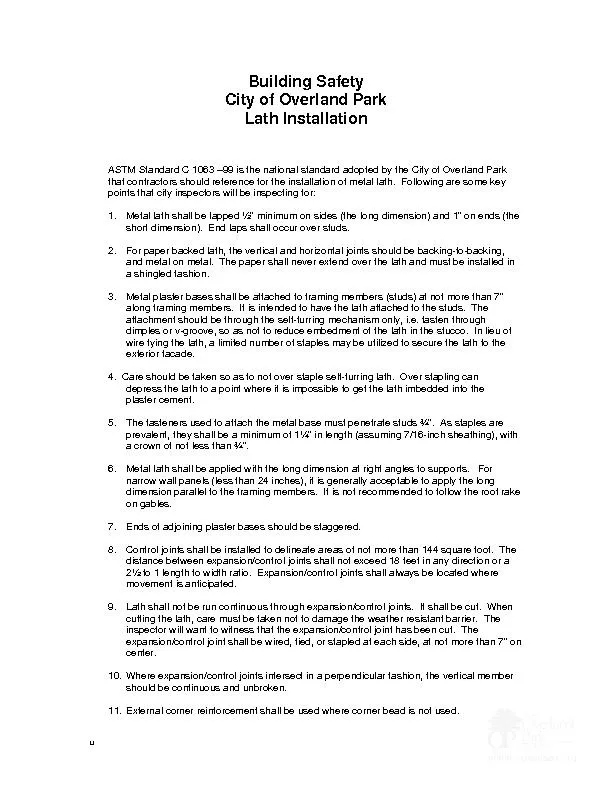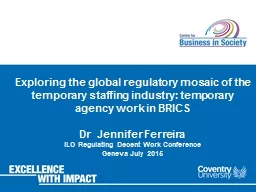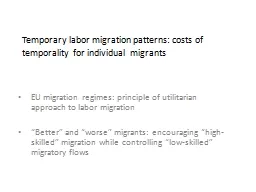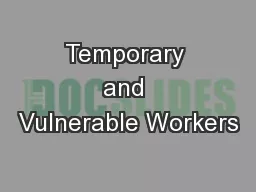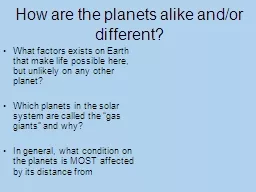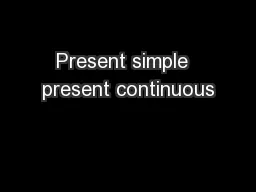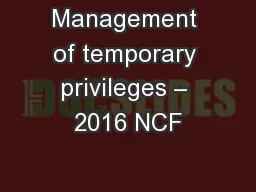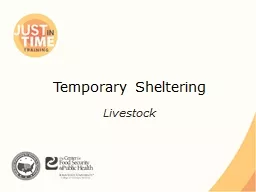PPT-B.P. #5 Present state of earth is temporary - different in
Author : yoshiko-marsland | Published Date : 2016-09-22
BP 6 Rates and scale of earth change are difficult to comprehend either too slow relative to human life or too huge in scale to imagine Related to how old we think
Presentation Embed Code
Download Presentation
Download Presentation The PPT/PDF document "B.P. #5 Present state of earth is tempo..." is the property of its rightful owner. Permission is granted to download and print the materials on this website for personal, non-commercial use only, and to display it on your personal computer provided you do not modify the materials and that you retain all copyright notices contained in the materials. By downloading content from our website, you accept the terms of this agreement.
B.P. #5 Present state of earth is temporary - different in: Transcript
Download Rules Of Document
"B.P. #5 Present state of earth is temporary - different in"The content belongs to its owner. You may download and print it for personal use, without modification, and keep all copyright notices. By downloading, you agree to these terms.
Related Documents

